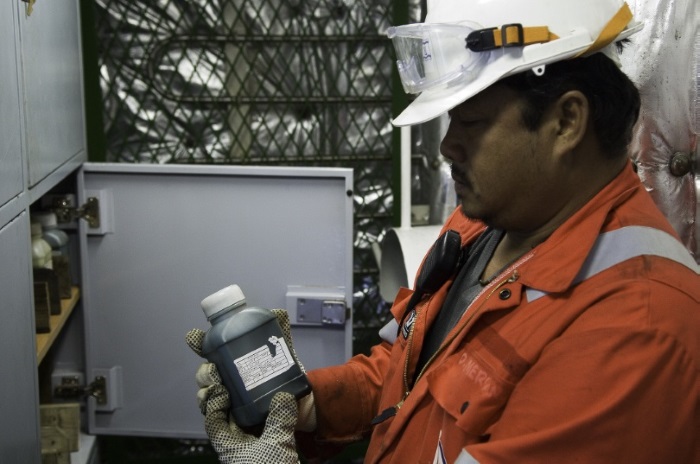New sampling guidelines for the sulphur content of fuel oil
The IMO has published a recommended method for sampling of liquid fuel oil used on board ships to assist with effective control and enforcement of the sulphur content requirements under MARPOL Annex VI.
IMO’s “Guidelines for Onboard Sampling for the Verification of the Sulphur Content of the Fuel Oil used on board ships” was approved in October 2016 at the Maritime Environment Protection Committee’s 70th session (MEPC70) and has been issued as MEPC.1/Circ.864. Although the guidelines are a recommendation only, they set forth an acceptable sampling method for inspectors to determine the sulphur content of fuel oils, both with respect to location of sampling points and handling of the samples.

It is worth noting that the ship’s representative should, in the absence of a dedicated sampling point approved by the flag state/classification society, be able to propose a location and arrangement for sampling that is safe and representative of the fuel. According to the IMO guidelines, this sampling point should comply with all the following requirements:
be easily and safely accessible;
take into account the different fuel oil grades used for the fuel oil combustion machinery item;
be downstream of the in-use fuel oil service tank;
be as close to the fuel oil combustion machinery as safely feasible taking into account the type of fuel oil, flow-rate, temperature, and pressure behind the selected sampling point;
be located in a position shielded from any heated surfaces or electrical equipment and the shielding device or construction should be sturdy enough to endure leaks, splashes or spray under design pressure of
the fuel oil supply line so as to preclude impingement of fuel oil onto such surface or equipment; and
be fitted with suitable drainage to the drain tank or other safe location.
The IMO guidelines also draw attention to the importance of only taking the fuel oil sample once a steady flow is established in the fuel oil circulating system as well as thoroughly flushing through the sampling connection with the fuel oil in use prior to drawing the sample.
Members and clients are advised to revisit their onboard procedures for fuel sampling and consider if the recommendations contained in the IMO guidelines should be implemented. Following an inspection involving sampling, it is also advisable that the ship’s representative verifies that all sample bottles are properly sealed and labelled. For each sample drawn during the inspection, one bottle should be retained onboard the ship for a period of not less than 12 months from the date of collection.
Additional guidance and recommendations are also available in our Loss Prevention Circular: Onboard verification of fuel sulphur content dated 30 September 2016.
Source: Gard (http://www.gard.no/web/updates/content/22628772/new-sampling-guidelines-for-the-sulphur-content-of-fuel-oil)
HEADLINES
- Do shipping markets want Biden or Trump for the win?
- All 18 crew safe after fire on Japanese-owned tanker off Singapore
- Singapore launching $44m co-investment initiative for maritime tech start-ups
- Cosco debuts Global Shipping Industry Chain Cooperation Initiative
- US warns of more shipping sanctions
- China continues seaport consolidation as Dalian offer goes unconditional